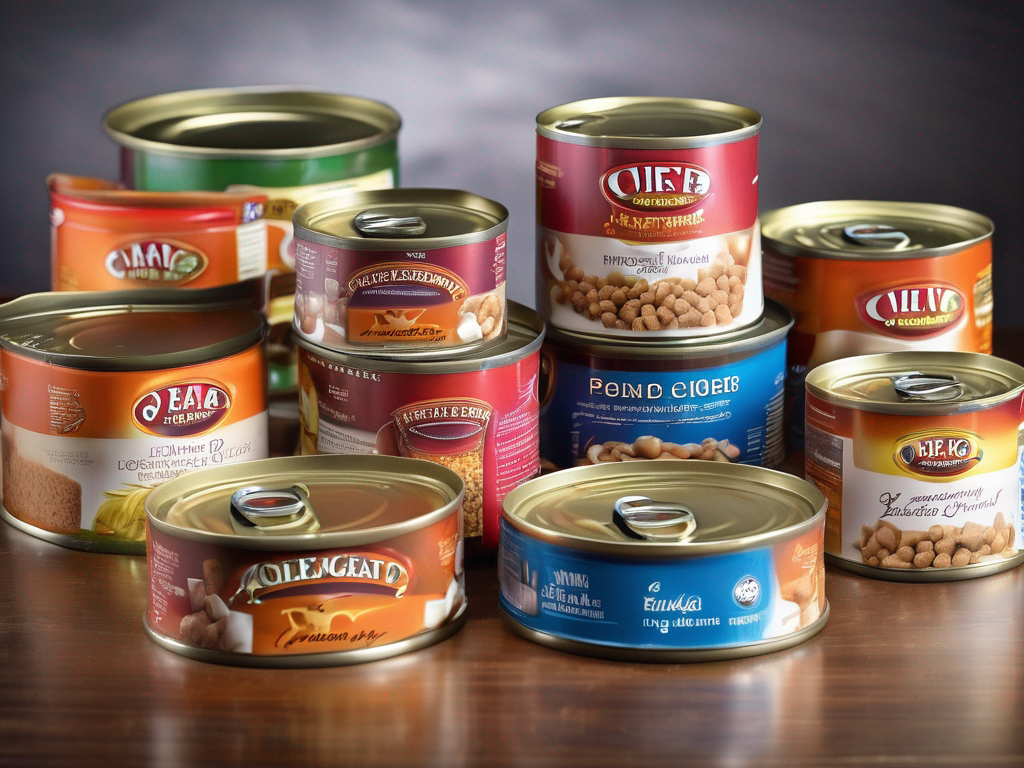
The Best Way to Store Canned Dog Food for Maximum Freshness
Get Your Free Food Safety Cheat Sheet
30 most common foods with instant answers. Print it and stick it on your fridge—completely free!
The Best Way to Store Canned Dog Food for Maximum Freshness
Canned dog food is a convenient and nutritious option for our furry friends. However, to ensure that the food remains fresh and safe for consumption, proper storage is essential. In this blog post, we will discuss the best practices for storing canned dog food to maintain its quality and freshness. (Canned dog food)
Why Proper Storage is Important for Canned Dog Food
Proper storage of canned dog food is crucial for several reasons:
-
Maintaining Nutritional Value: Proper storage helps preserve the nutritional content of the food, ensuring that your pet receives the necessary nutrients.
-
Preventing Spoilage: Correct storage practices can help prevent the food from spoiling or becoming contaminated, reducing the risk of foodborne illnesses in your pet.
-
Extending Shelf Life: By storing canned dog food correctly, you can extend its shelf life and ensure that it remains safe and palatable for your pet.
Ideal Storage Conditions for Canned Dog Food
To maximize the freshness and quality of canned dog food, follow these essential storage guidelines:
1. Store in a Cool and Dry Place
- Keep canned dog food in a cool, dry location away from direct sunlight and heat sources.
- Avoid storing the cans near appliances that generate heat, such as ovens or radiators.
2. Use Airtight Containers
- Once a can of dog food is opened, transfer any unused portion to an airtight container.
- Make sure the container is clean and free from any lingering odors that could affect the food's taste.
3. Check Expiration Dates
- Always check the expiration dates on canned dog food before purchasing.
- Use older cans first to ensure that your pet consumes the food before it expires.
4. Rotate Stock Regularly
- Practice first in, first out (FIFO) rotation to ensure that older cans are used before newer ones.
- This helps prevent cans from sitting on the shelf for an extended period, potentially leading to spoilage.
5. Avoid Freezing Canned Dog Food
- While canned dog food can withstand freezing temperatures, it is best to avoid freezing as it can alter the texture and taste of the food.
- Optimal storage temperature for canned dog food is between 50-100°F (10-38°C).
Safety Tips for Storing Canned Dog Food
In addition to the storage guidelines mentioned above, here are some additional safety tips to keep in mind:
- Wash your hands before and after handling canned dog food to prevent contamination.
- Do not feed your pet directly from the can to avoid bacterial growth.
- Store canned dog food away from chemicals, cleaning agents, and other potential contaminants.
Conclusion
Proper storage of canned dog food is essential to ensure that your pet receives safe and nutritious meals. By following the storage guidelines outlined in this post, you can maintain the freshness and quality of the food, providing your furry companion with a healthy diet. Remember to check expiration dates, store in a cool and dry place, and use airtight containers for optimal freshness. Your pet will thank you for it!
For more information on [canned dog food](/food/canned dog food) and other pet care tips, stay tuned to our blog for future updates. (Canned dog food)
Authoritative Food Safety References
These agencies and university labs inform every tip and health precaution we publish.
USDA FoodKeeper – Cold Storage Guidelines
Official refrigerator, freezer, and pantry timelines maintained by the U.S. Department of Agriculture.
Visit USDA FoodKeeperFDA Produce Safety Rule & Grower Guidance
Field-to-fridge handling practices that prevent contamination of fruits, vegetables, and leafy greens.
Visit FDA Produce SafetyCDC Foodborne Illness Prevention Hub
Surveillance-backed guidance on pathogens, symptoms, and steps to reduce foodborne illness risk.
Visit CDC Food SafetyUC Davis Postharvest Technology Center
University research detailing optimal storage atmospheres for produce after harvest.
Visit UC Davis PostharvestPenn State Extension – Home Food Preservation & Safety
Peer-reviewed extension bulletins on safe canning, chilling, and reheating practices.
Visit Penn State ExtensionGet Your Free Food Safety Cheat Sheet
30 most common foods with instant answers. Print it and stick it on your fridge—completely free! Want more? Upgrade to the complete guide with 70+ foods.
Scan your food directly and get instant safety info using our AI-powered camera feature.